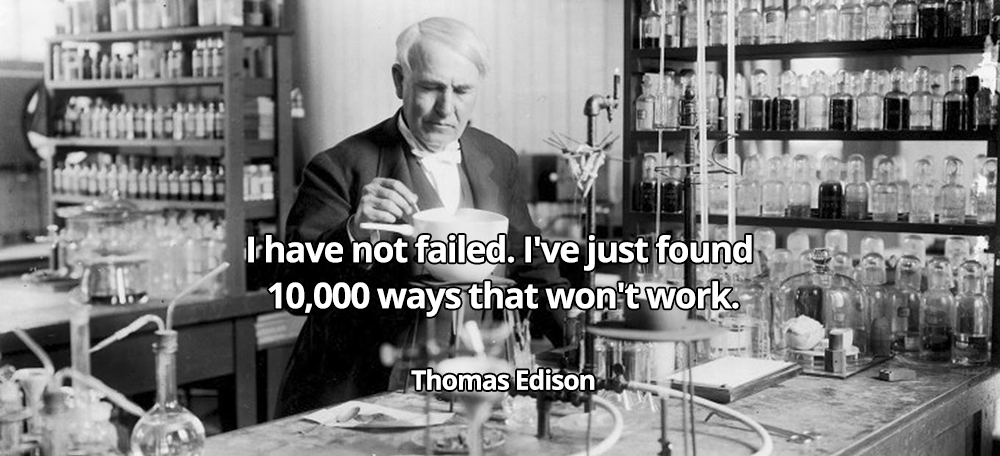Jun 15, 2016
What is Innovation? A Detailed Look At Innovation
Innovation is the foundation of organizations. The moment that a company stops innovating, their days become numbered. Many people have a general sense of what innovation is but when you take a moment to examine their definition of innovation, it wouldn’t hold up.
So what is innovation anyway?
In the dictionary, innovation is defined as the action or process of innovating. This definition by itself does not tell most of us what innovation is. Rather it gives most of us a vague understanding of what it is.
It can perpetuate a bias in us about innovation and what it takes to be innovative. For example, a lot of people think that innovation belongs to younger people. There are some organizations that will only hire younger people because they believe that to be considered innovative, you should be young. This is far from the truth.
Some people also believe that innovation only deals with technology and special departments like R&D. Again, this is far from the truth. For a company to be truly innovative, it needs to tap into the minds of everyone in its organization.
Some also believe that to be innovative, you have to be super smart. When you say innovation, they immediately think of anyone that they consider smart. This is not true. Besides, everyone has capable intelligence but it depends on how they choose to use their minds.
Innovation is the ability of a company to gather and evaluate ideas within its organization, as well as what it chooses to do with those ideas. The same can be said about an innovative person. An innovative person doesn’t just rely on themselves for all of the ideas. They consistently tap into the minds of their friends, families, co-workers, and acquaintances for new ideas by asking questions.
An easy way to recognize innovation is to think of three things. These are enhancement, elimination, and past.
- Enhancement – Think about the iPhone, even though it arrived late in the smartphone business, it dominated because of its ease of use and touchscreen keyboard capabilities.
- Elimination – Think of Microsoft Office, it eliminated the need for us to write everything by hand and store it in a book.
- Past – Think of how the need for home cooked meal has brought about thousands of restaurants that specialize in home cooked foods.
Invention and Commercialization
There are two components to innovation that make it work and these are invention and commercialization. The invention is the creative ability, product, and service. An invention is the result of good ideas.
Commercialization is how a company markets or distributes the idea. How do you take your invention to market? This is what commercialization really is. People usually confuse innovation and invention as the same thing.
You may have had a friend look at your phone and say something like “wow that’s innovative”. However, they are not the same thing because the invention is the result of innovation.
When you spend time gathering ideas from your employees and evaluating them, you are innovating or conducting innovation. Once you evaluate and implement some of those ideas, you have invented something.

On its own, your invention will not generate value. However when you add commercialization to your invention, then you can create value.
Commercialization and Invention Explained in This “What is Innovation?” Video by MIT
In this four-minute video, instructor Bill Aulet from MIT explains the difference between innovation and invention. He also explains why invention cannot thrive without commercialization.
“You can create a business, choose a name, but unless people know about it you’re not going to sell any products”. Richard Branson, Founder of Virgin Group.
Connecting The Dots and Starting The Innovation Process
You may be wondering how you can make innovation work for your business or organization. The concept of innovation is to collect ideas and evaluate those ideas to find worthy implementations for your business. Thus, it makes sense that the first step in the process will be to collect ideas. However, how you collect those ideas matter.
The idea of a suggestion box system is rapidly becoming obsolete as businesses realize that they are flawed. They fail to engage workers and create a true culture of improvement. One of the main reasons why is the lack of collaboration and feedback.
Normally with a suggestion box system, when you place an idea in the box, you don’t get feedback on that idea. In fact, most of your ideas may never be heard about again. There is a better way.
Idea management software tools are better at collecting information from everyone in an organization. They make it easier to evaluate those ideas and implement them in a timely fashion. They enable organizations to connect and share with all of their employees, regardless of location.
Idea management tools help companies innovate by proving a web portal that allows everyone in the organization to share ideas and provide feedback to other ideas. Ever worked in an organization where it seemed like you were the only one that noticed improvements that could be made in a product?
Many times, this creates a belief in ourselves that we are the only ones with ideas to share but this is untrue. Many companies have realized that as soon as they implement a solid solution that streamlines innovation like idea management tools, they see an increase in performance and revenues.
Innovation is fundamental to business success. It is the reason why businesses like Apple, Microsoft, and Google thrive. It can be the core that stabilizes your company’s engine. A successful innovation management system will increase employee engagement in all matters of business.
Do you have some examples of innovation within your organization?
How is innovation helping your business right now? Please let us know in the comments.